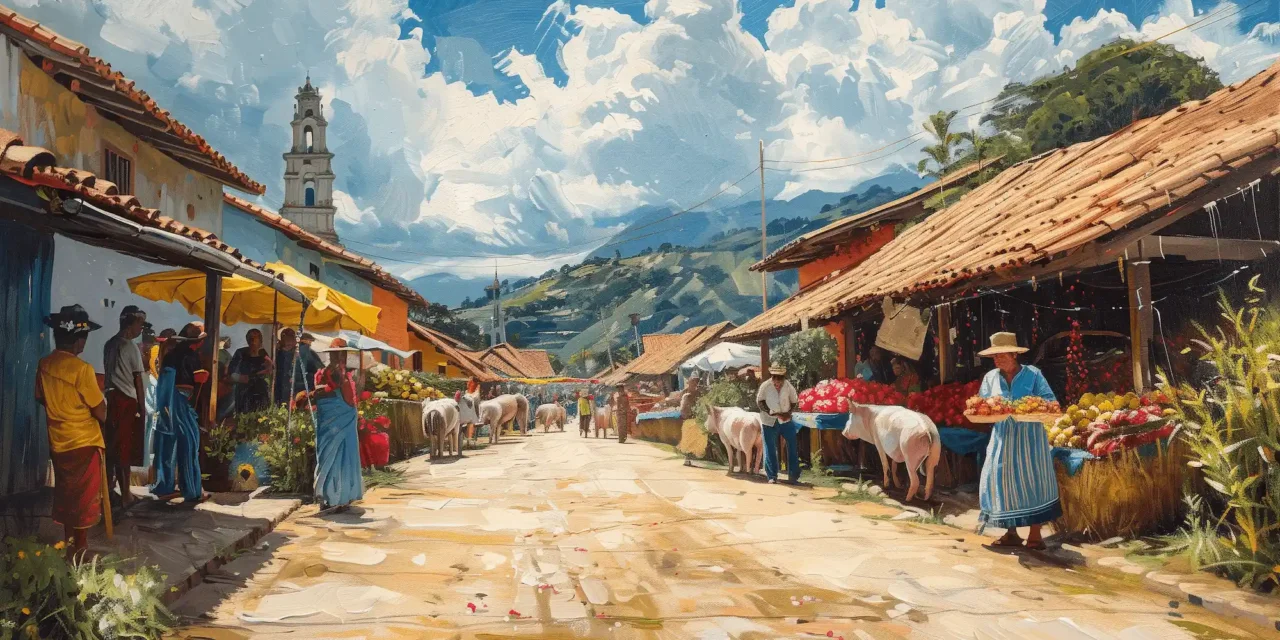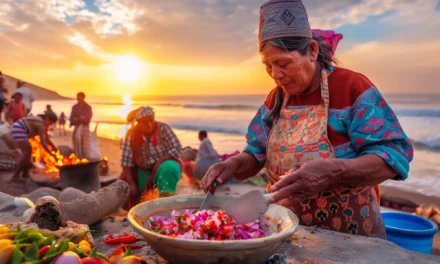It’s time to shake off the winter blues and get ready for some sizzling summer fun! Every June in Tolima and Huila, the celebration of the Nativity of Saint John the Baptist and the Feast of Saints Peter and Paul is an event like no other – it’s the perfect time to enjoy some traditional “lechona” festivities!
Think of it as a pig-roasting extravaganza, as traditional families in the region prepare a delicious suckling pig to share with family, friends, and neighbors. Imagine the mouthwatering aromas of the succulent roast wafting through the air – it’s pure pork paradise! So bring your appetite and come celebrate with some traditional Tolima culture.
Imagine a succulent suckling pig, so tender you could cut it with a butter knife. Picture it being properly fed and cared for until it’s ready for the big occasion. Lechona is no ordinary dish; it’s the delicious combination of Tolima and Huila cultures, with all the complexities of cutting and preparing the meat and keeping the skin in perfect condition1.
An Unconventional Blend – Pre-Columbian Customs with Modern Saint Celebrations
It is like a delicious layer cake of cultures; the roots of the celebration of Saint John and Saint Peter definitely originate from the celebrations of the natives during the summer solstice – their way of honoring the gods. The Spanish settlers quickly jumped on the chance to convert the natives, so they flavored the festivities with a hint of Catholic tradition. The result is a hearty mixture that combines pre-Columbian customs with modern-day saint celebrations.
However, recent studies have found that these celebrations were not solely for religious purposes but also to honor the king of Spain and encourage the citizens to be loyal and respectful to the Spanish monarchy. It was akin to a high-five for their king. An act from 1790, written by the governor Lucas de Herazo y Mendigaña, ordered the people to celebrate these milestone days.
The Spanish settlers were real meat lovers! They had a craving for beef and swine, likely to reconnect with their hearty and comforting homelands. It wasn’t an easy feat to get a quality porker, though! The early agriculturalists wrestled with growing, caring for, and properly nourishing the porkers.
Succulent Suckling Pigs: A Colonial Culinary Spectacle
It’s no secret that putting together a good pig roast is something special. In Colombia, it was taken to the next level. Those who wanted to show off their social status put together a roast that was sure to impress, a real swine-dining extravaganza! Carefully selecting the perfect size and weight pig and the best ingredients to turn it into a mouthwatering masterpiece.
Thanks to our trusty scribes and files from the colonial period, we now know that various cuts of beef and pork were being sold at public markets in bustling cities back in the day. Suckling pigs were the rockstars of the market – a real delicacy for those lucky enough to snag one! In Tolima, locals adapted a recipe from Castile and added their special ingredient: creative panache. They stuffed these suckling pigs with a pork-based stuffing, lovingly spiced with local ingredients, creating a flavourful medley that was sure to please.
The pork that we drool over today had its start in glorious Europe, but before that, the natives in the area were no strangers to a good meal of javelina cooked over a primitive BBQ. Sure, the Spanish crowd over bringing pork to the area, but they simply put the exotic twist on what the natives already knew – that tender, juicy pork was like a taste of heaven!

Take a Trip to El Espinal, Where Lechona is King
Today the municipality of El Espinal in beautiful Tolima is overflowing with lechona and rightly so! This thriving community was established way back in 1754, and it’s no wonder that it was a popular spot to settle for the inquiring minds of farmers and landowners during the eighteenth century.
By the end of the XIX century and during the XX century, El Espinal became a pivotal stop for all sorts of transportation in the area. Transporting its tradition along with it, the people of El Espinal decided to create restaurants and establishments to treat weary travelers to a tasty treat. What the lodging establishments of El Espinal offered wasn’t your run-of-the-mill hotel breakfast – it was something far better! Instead of the traditional spread, they offered up the delicious lechona.
It’s no secret that Lechona from El Espinal is a hit with the locals, which is why the municipality declared June 29th as a special day for its occasion – “Lechona Day.” On this day each year, the local producers gather at the mythical Parque Mitologico to showcase their original recipes to the community – talk about a special treat! The timing of Lechona Day pays homage to two important saints – John and Peter – in June. Now here’s the kicker – the ingredient that really makes this party-stopper tick – the pigs – are raised not in El Espinal but in a nearby municipality called Guamo.
Rice, Peas and Pig Skin: Crafting a Delicious Lechona
The current recipe is at least 100 years old and consists of stuffing the pig skin with a mix of pork, peas, and spices. It is very important to wash and put salt on the pig’s skin to get the desired texture. In some versions of the mix, they use lard to get better and tastier results. The suckling pig must be in a wood-fired oven for 8 to 12 hours at a low temperature. The Lechona has “insulso” (a custard with no flavor) and “arepa oreja de perro” (a traditional arepa from the region that is similar to the ear of a dog) as side dishes.
Lechona is a dish that has taken on many different flavors throughout Colombia. While the traditional recipe from Tolima continues to remain popular, creative chefs in the cities have put their own creative spin on this beloved dish with delicious modifications. Rice with peas? Yeah, that’s one way to stuff a pig’s skin! In fact, this delicious variation has become so popular it’s now the most common way to enjoy the dish in Colombia today.
- SamaelJorge[↩]




